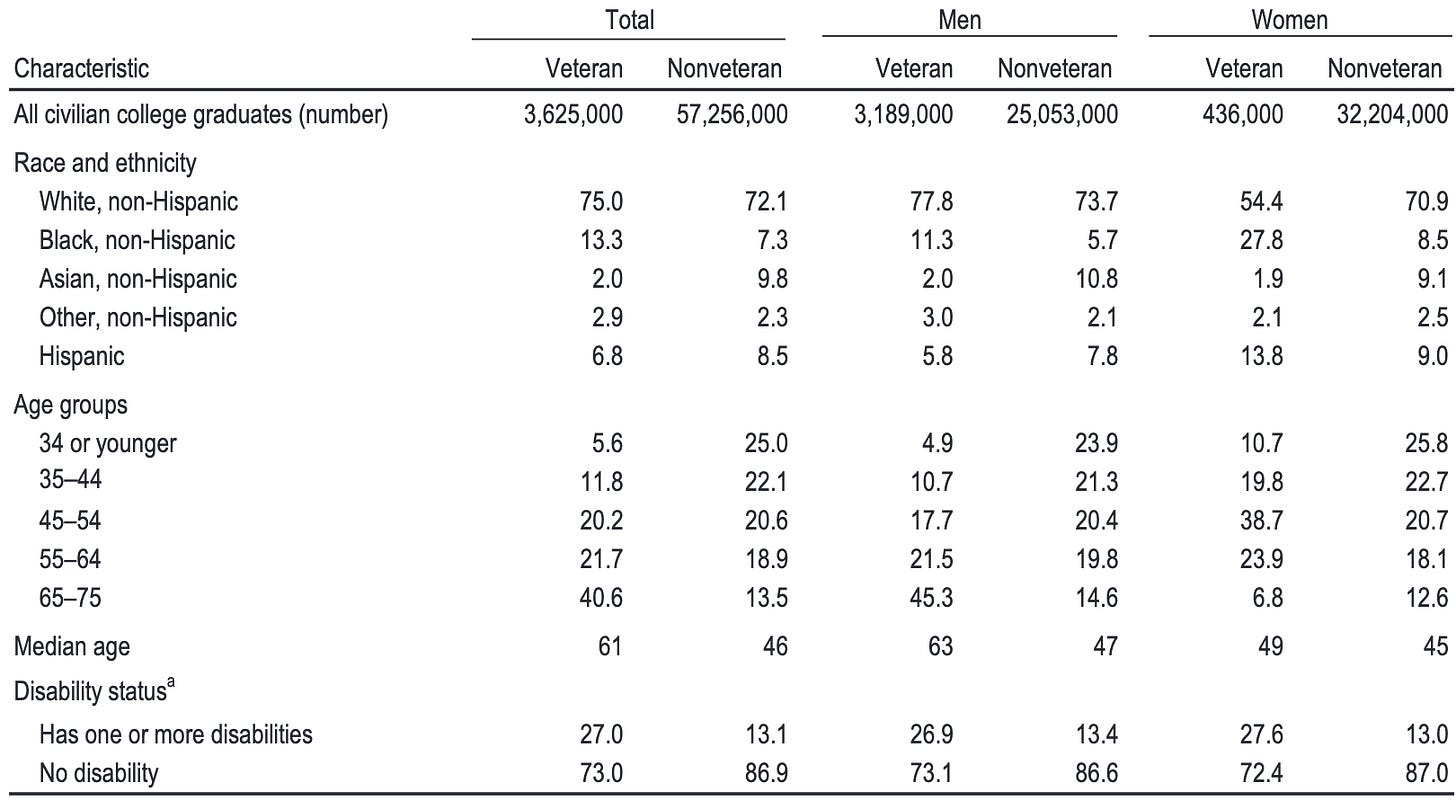Active-duty and veterans in academia

My grandfather was a WWII veteran. He operated small-boat landing crafts in the Pacific Theatre. His job was driving landing crafts onto beaches including at the Battle of Guadalcanal. He returned stateside at the end of the war. He worked in various jobs through the rest of his life, including much of his career in HVAC. The G.I. Bill was passed in 1944. The bill provided several benefits to WWII veterans. However, the bill, and its subsequent revisions in 2008 and 2017, is perhaps best known for funding vocational or educational opportunities. My grandfather would have had access to the bill and funding. However, he never finished high school as those years were spent overseas during his deployment.
With Memorial Day, I thought about my grandfather, other veterans, and active-duty military personnel. I have had service members in my classrooms as students, but I have been fairly disconnected from this community.
There is some federal data available on active-duty and veteran service members attending institutions of higher education, but mostly at the undergraduate level. In 2021, over 600,000 individuals were using the GI Bill (about 40% of those eligible) to pursue higher education. There are a few additional interesting data points based on survey work by other groups (reports here and here).
In 2021, 6.4% of the adult population were veterans of the U.S. military. Approximately, 25% of these veterans served after September 2001.
In any given year, 5% of undergraduates were military, split roughly equally between active-duty and veteran status.
The numbers above also include students at colleges and universities focused on the military along with federal service academies (e.g., West Point).
Active-duty and veteran students have intersecting identities that can affect their educational experience.

Veteran college graduates tend to be older, male, and White, non-Hispanic. However, we also see that Black women and men are a larger percentage of the veteran population than non-veteran college graduates. Veteran college graduates were twice as likely as non-veteran college graduates to have one or more disabilities. Veterans were also more likely to attend a community college. Because military students tend to be older, they are also more likely to have a dependent. Military students are also more likely to be first-generation (reports here and here with related statistics).
To support active-duty and veteran students, most colleges have developed additional support structures. Many campuses have offices and staff dedicated to supporting these students. At my institution, the office is called the Military and Veteran Services Center and includes two staff members. Many college campuses also support a Reserve Officers' Training Corps (ROTC) program. The National Defense Acts of 1916 and 1920 provided support for ROTC programs across hundreds of colleges and universities, including all of the land-grant institutions. The purpose of ROTC programs is to train commissioned officers who will serve after graduation.
Colleges really want to recruit military students. I think a lot of this stems from colleges genuinely wanting to support students from the military. However, because military students also come with funding, colleges are happy to bring them to campus. Some colleges spend a lot of resources to recruit military students. In 2021, 16.6% of veterans attended for-profit institutions, compared to 8.8% of all students. These for-profit institutions received millions from the government to enroll these students despite lower success rates than non-profit colleges. For example, the Veterans Affairs Department shelled out over $1.5 billion to the University of Phoenix between 2013 and 2021. Some laws are making their way through Congress and the Department of Education to address some of these issues.
I hope in the future that the NSF Survey of Earned Doctorates can include a question on Veteran status. I would also be very interested to see data on how many faculty are veterans. What types of support structures exist for military students at your campus? I plan to meet with the military and veteran service center at my institution to better understand the needs of these students.


